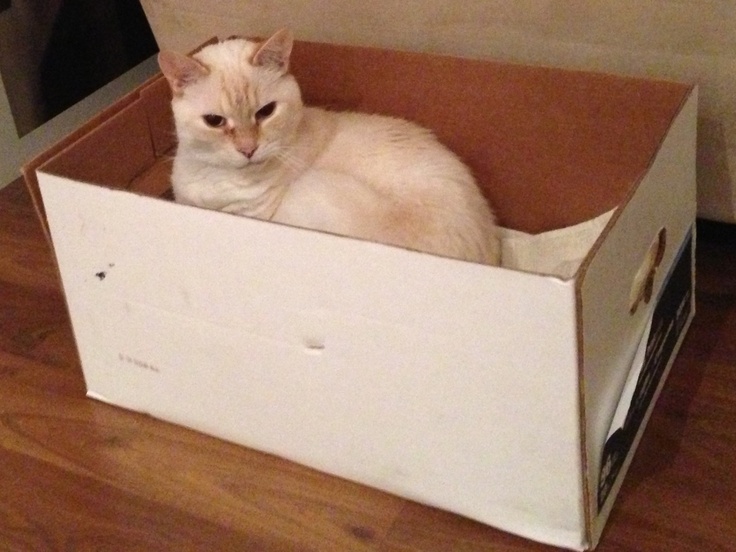Dr. Phil Zeltzman’s Blog
Five secrets for a happy cat
Having a happy, un-stressed cat is easy to do.
Below are 5 secrets to help you achieve kitty Zen*.

1. Provide a safe place
Every cat needs a safe and secure place where (s)he can retreat to and feel protected. It can also be used as a resting area. Kitty should have the ability to exit and enter the space from at least 2 sides if it feels threatened. Most cats prefer a space large enough to fit only themselves, that has sides around it, and that is raised off the ground.
Good examples of safe places are a cardboard box, a cat carrier, and a raised cat perch. There should be at least as many safe places, sized to hold a single cat, as there are cats in a household. Safe places should be located away from each other, so that cats can choose to be on their own if they feel like it.
2. Provide multiple and separated key environmental resources
What on earth are key environmental resources?
They include include food, water, litter box, scratching posts, play areas, and resting /sleeping areas. These resources should be separated from each other, so that cats have free access without being challenged by other cats or other potential threats (like a dog!).
Separation of these resources reduces the risk of competition, stress and stress-associated diseases (e.g. bladder disease).
3. Provide opportunity for play and predatory behaviors
Play and predatory behaviors allow cats to fulfill their natural instinct to hunt. Play can be stimulated with the use of interactive toys that mimic preys, such as a toy mouse that is pulled across a floor or feathers on a wand that is waved through the air. Allow your cat to capture the “prey” every once in a while to prevent frustration.
Early in a cat’s life, introduce interactive play, so they learn to avoid going after your hands and feet for play. Using food puzzles or food balls can mimic the action of hunting for prey, and provides more natural eating behavior. You can encourage your cat’s interactive play by rotating your cat’s toys, so they don’t get bored.
Use treats to reward and provide positive reinforcement for appropriate play. If you have more than one cat, remember to play with them individually.
And because I am a surgeon, I have to remind you to never leave cat toys unattended, especially anything that looks remotely like a string or a ribbon. They can be swallowed by your cat – or your dog.
4. Provide positive, consistent, and predictable human–cat social interaction
A cat’s individual preferences determine how much they like human interactions such as petting, grooming, being played with, being talked to, being picked up, and sitting or lying on a person’s lap.
To a large extent, this depends on whether, as kittens, they were introduced to and socialized with humans during their period of socialization from 2 weeks to 2 months of age. Remember that every cat interacts differently and respect your cat’s individual preferences.
Remind guests and all household members not to force interaction and instead let the cat initiate, choose, and control the type of human contact.
5. Provide an environment that respects the importance of the cat’s sense of smell
Smell and chemical information is a primary means by which cats assess their surroundings and affirm their sense of security and comfort within their living quarters. It is important for pet owners or other humans to avoid introduction introducing odors or substances (e.g. detergents, medications, foods, laundry or unfamiliar clothing) that compete with or disrupt the cat’s sensory perception of its environment. When a cat encounters an unpleasant or threatening smell, the stress can cause problem behaviors.
Marking is an important form of olfactory communication. A fundamental principle of maintaining a secure in familiar sensory environment is not to punish cats for house soiling.
These are 5 great tips to remember to keep your cat happy and healthy.
Until next time,
Phil Zeltzman, DVM, DACVS, CVJ
* The following 5 tips are inspired from a document published by the American Association of Feline Practitioners.

Dr. Phil Zeltzman is a traveling veterinary surgeon in Pennsylvania & New Jersey. An award-winning author, he loves to share his adventures in practice along with information about vet medicine and surgery that can really help your pets. Dr. Zeltzman specializes in orthopedic, neurologic, cancer, and soft tissue surgeries for dogs, cats, and small exotics. By working with local family vets, he offers the best surgical care, safest anesthesia, and utmost pain management to all his patients. Sign up to get an email when he updates his blog, and follow him on Facebook, too!

